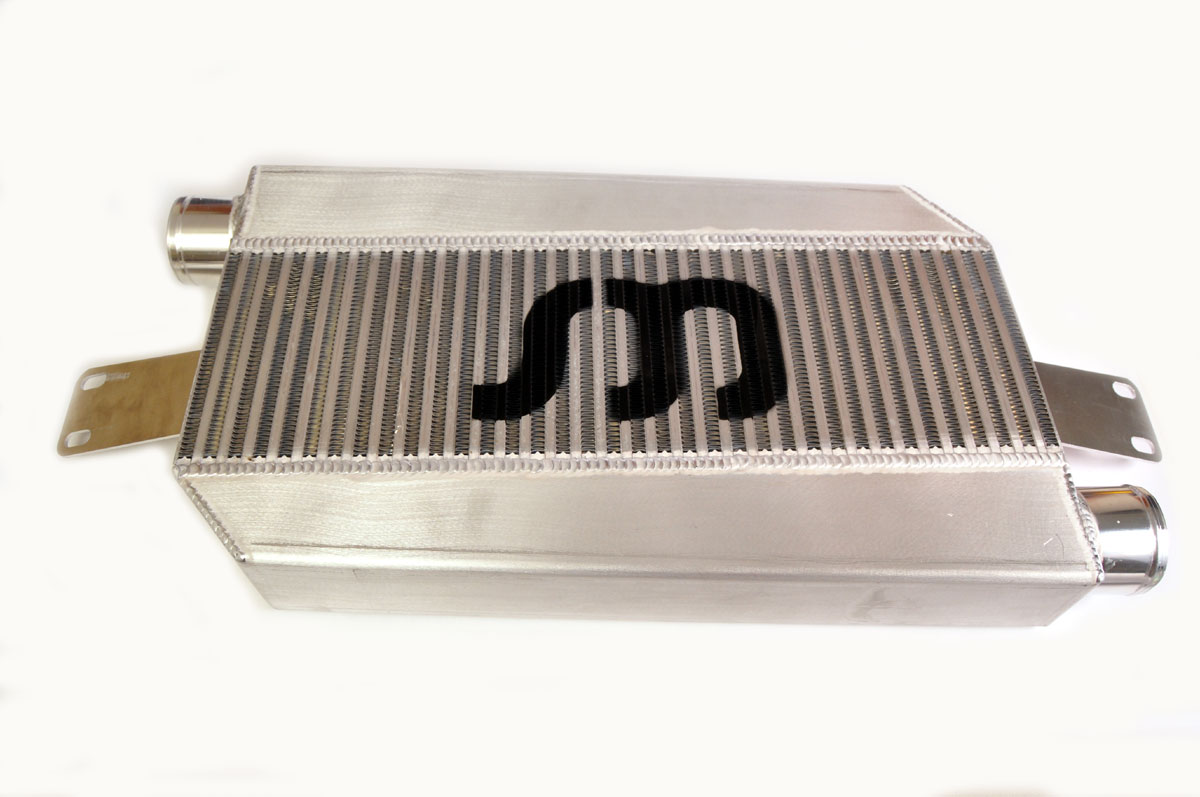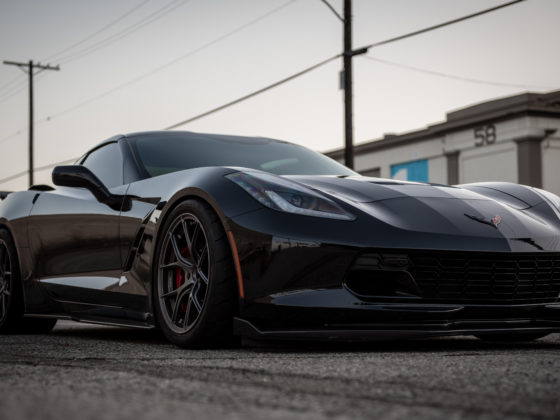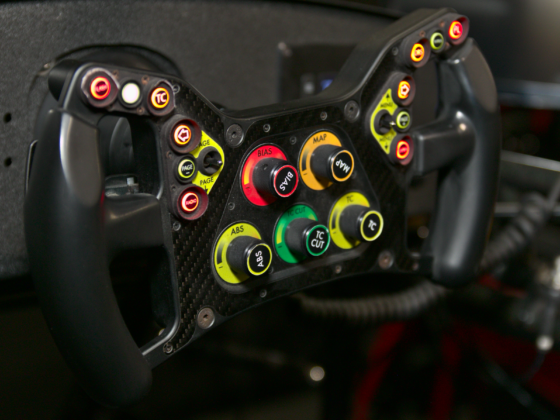 VQ37VHR Air to Air Supercharger Kit
VQ37VHR Air to Air Supercharger Kit
In part 1 of our G37 Supercharger for the VQ37VHR article we covered the Vortech V3 SI supercharger. In part 2 we covered the fueling components we used with our CJ Motorsports S1.SE fueling system. In this article we’ll be covering our VQ37VHR Air to Air Supercharger Kit supplied by Soho Motorsports.
Back in part1 we discussed two options when supercharging your G37 or 370z. Option 1 is the CARB legal kit made by Stillen which utilizes the smaller V3 Sci compressor from Vortech and among other things an air to water intercooler. This is a great option for those that want to literally boost their car to the GT performance machine we all wish Nissan would have made available from the factory. Option 2 is what we went with which is an ‘Air to Air kit’ supplied by Soho motorsports.
Soho incorporates the following Stillen components in their kit
- The Stillen intake manifold (which relocates both intakes to the passenger side)
- The Supercharger mounting bracketry and pulleys for both the blower assembly and the revised accessory belt routing
- Belts
- Maf extensions
- Wrench for installing the intake manifold and bolts for mounting all of the above

The Stillen intake manifold will be a showstopper at the local car meets. Both throttle bodies are relocated to the passenger side of the engine compartment which provides routing for the intake charge pipes in both kits. It’s finished off in a nice black wrinkle coat paint along with the Stillen logo milled into the aluminum. Our intake manifold has had the air to water heat exchanger removed and instead it will be sealed off with a block off plate. A new factory gasket for the manifold is supplied along with new mounting bolts.

The pulleys and accessories
Unfortunately, most of Stillen’s billet bracketry will be covered up in the already crowded engine bay. Extensions for the relocated mass air flow sensors and a longer belt for the current drive accessories is also included. There’s an additional belt to power the pulley for the jackshaft. Finally there’s new high grade bolts to mount these accessories and bring life to our supercharger.






14 comments
Wait, 60-70whp from a filter? Do you mean 6-7?
Yes 60-70whp in forced induction doesn’t seem out of the realm of reality. We haven’t confirmed this with our own car this was confirmed by both Soho and our tuner at Specialty Z.
Here are a couple of dyno charts for your reference if you scroll down a bit on these pages. While they don’t show the results with the filter on and off they are really big numbers for a supercharged v6. Based on the numbers we’ve seen on our car and others I’d think these runs were with the turbo guard.
https://sohomotorsports.com/products/soho-motorsports-a2a-supercharger-kit
https://sohomotorsports.com/products/soho-motorsports-air-to-air-upgrade-for-the-stillen-vq37vhr-supercharger-kit
In this particular case with a supercharger, 60-70whp seems reasonable. Once you see the install, you’ll see how little space is available for the filter and why the small K&N from the H-D was used. Relatively speaking, this filter is highly restrictive. On a turbo car, you can adjust the wastegate to spin the turbo faster. On a supercharger, it only spins as fast as the fixed pulley sizing will allow, so it can’t compensate for loss of mass air flow due to the restrictive air filter. So, 60-70whp loss is the result.
Because of space constraints, this is a silly small filter. In the future, we might cut a hole in the core support and fabricated something less restrictive to test.
why the move to air to air? whats wrong with air to water?
If you have the space, air to air is generally better, air to water systems have smaller bricks and greater pressure drop and the water side has smaller heat exchangers and can thermally saturate more easily.
is it possible to make an air to water system that won’t saturate? that would fit in a car that is, not some enormous system in a lab with no space constraints… or will all air to water systems saturate? specifically in a lapping day scenario with 20-30 min sessions…
It can be done. Just have to size a really big radiator for the IC system. Ferrari ran an air-to-water setup on their F1 car. so yeah, it can be done.
I think You would be better off using some sort of cobra-head silicone hose and re-routing the filter somewhere more sensible.
https://www.do88.se/en/artiklar/silicone-hose-_-hoses/silicone-hose-black/cobra-head/index.html
I’ve never seen a silicone hose like that before. I took a look at the flow charts and it seems like the testing is there to prove the airflow improvements over a 90 degree hose. At some point we’ve got to punch through the core support and get past the radiator to the fresh air in front. I’d think we’d also want a shield to prevent turbulence in airflow; similarly to what was on our V3 cold air intakes from Stillen when the car was N/A.
This is definitely top of mind before we start looking at e85 or adding more boost.
Do you have a part number for that KN Filter?
I’ll get in touch with the vendor and get the part number.
The part number is a K&N # RX-4130-1
What would you think the hp gains would be like with running soho’s air upgrade that they use on their new a2a kits? it routes it to the front around the bov with a full filter like you described. I will also be running a 9lb pulley with long tube headers hoping to make 600whp on 93